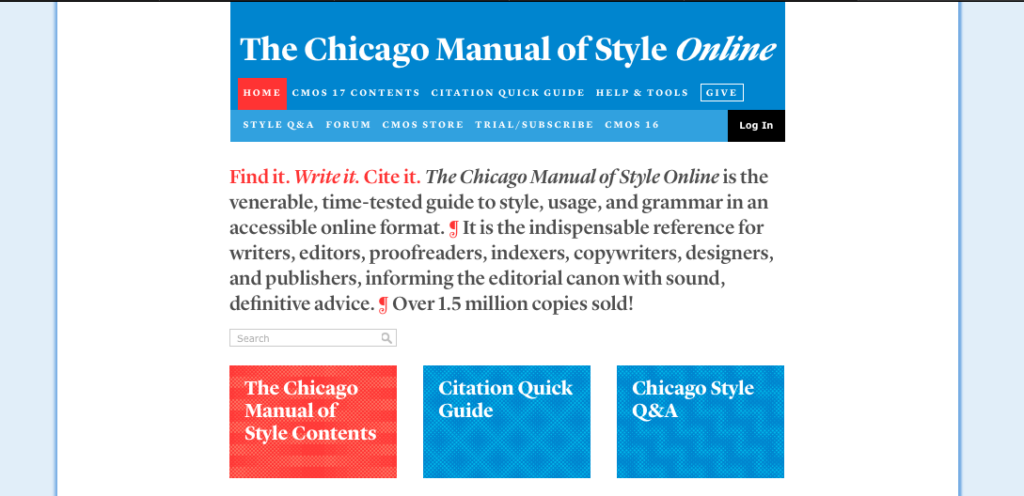Creating a style guide for your business can ensure that all communications, from written marketing materials to email correspondence, maintain a consistent and unified look. This looks impressive to those interacting with your company at all levels.
By establishing specific grammar, punctuation, and formatting rules, you can help ensure that your communications are accurate and polished.
In this article, we’ll provide tips on creating a style guide template and some resources to help get you started.
Let’s get started!
What is a Writing Style Guide Template, and Why Do You Need One?

A writing style guide template is like a cheat sheet for correctly writing. It includes words and how to use them. While some might think this guide is only for those bad at writing, that’s not necessarily true. Good writers also need to know the correct way to format their work.
1. Enhancing Consistency and Precision
This is why many professional writers have a style guide they refer to when working. Using a guide, they can ensure that their work is consistent and error-free. A writing style guide can be helpful even if you’re not a professional writer. You can always refer to your guide if you’re unsure how to format something or what word to use. This way, you’ll never have to worry about making a mistake in your writing again.
2.Businesses and Writing Style Guides
As for businesses, writing style guide templates are even more useful. They can include what words to use, how to format sentences, and what tone to use. For one thing, making an effort to create a guide can help to ensure that all of your communications are consistent.
3.Efficiency and Time Savings
This is especially important if you have multiple people working on your behalf. In addition, a writing style guide can help you to save time in the long run. Having a set of guidelines to follow, you won’t need to spend as much time editing and revising your work. So, if you’re looking to streamline your writing process, a style guide template could be just what you need.
Elements of a Writing Style Guide
Any good writing style guide should have three essential elements: a usage guide, a grammar guide, and a formatting guide.
- The usage guide should cover the primary spelling, punctuation, and capitalization rules.
- The grammar guide should provide an overview of the main principles of grammar, such as subject-verb agreement and verb tense.
- Finally, the formatting guide should include information on how to format different types of documents, such as memos, letters, and reports.
These three simple guidelines ensure your writing is clear, concise, and formatted.
How to Create Your Writing Style Guide Template
To create your own writing style guide template, you’ll need to complete the following process:
1. Decide on the Basics

What elements do you want to include in your guide? A good starting point is to decide on the basics, such as your preferred spelling (American or British English), your preferred style of punctuation (such as Associated Press or Chicago Manual of Style), and your preferred way of abbreviating terms (such as “Dr.” or “Mr.”). Do you want a section on grammar rules? Punctuation tips? Perhaps a section on how to format different types of documents? Once you’ve decided what topics to cover, it’s time to start writing.
2. Create a Template
Once you’ve decided on the basics, it’s time to create a template for your guide. To do this, open up a blank document in your word processor and fill in the details. Include everything from the title page to the index, and leave plenty of space for notes and examples.
There’s no wrong way to create a style guide, but there are a few things to remember as you write. Make sure your guide is clear and concise. You don’t want your readers to get lost in a sea of information, so focus on covering the most critical points. Also, use bullets and short paragraphs to make your guide easy to scan.
3. Fill in the Details
As you’re writing, keep your style guide close so you can refer to it when needed. Include examples of how to use each rule, and explain why the rule is essential. For instance, you might want to include a section on using strong verbs, active voice, and concrete images.
4. Proofread
When finished, proofread your work carefully to ensure it’s error-free. Then, print out a copy or create a PDF so that you can easily refer back to it when needed and make it available to everyone in your organization.
5. Get Feedback

Once you’ve finished writing your guide, getting feedback from others is essential. Ask a colleague or friend to read through your guide and offer suggestions. This will help you catch any errors or inconsistencies you might have missed.
With these tips, you’re ready to start writing your style guide. Use the template below to get started, and tailor it to fit your needs.
Writing Style Guide Template
- Introduction
- Purpose of this guide
- Who is this guide for
- Grammar and punctuation rules
- Overview of basic grammar rules
- Tips for using punctuation correctly
- Formatting tips
- How to format different types of documents
- Memos
- Emails
- Reports
- How to format different types of documents
- Tips for using style sheets
- Conclusion
- Thank you for reading!
- Where to go for more help
Depending on your industry and area of focus, your guide might require more details. What follows are some more section suggestions. The aim is to help you identify what you do (or don’t) need, so use the following tips as you see fit.
You may want or need to include a section on:
- Writing for different audiences
- Using plain language
- Active vs. passive voice
- Writing headlines and titles
- Using social media effectively
- Writing for the web
- Email Etiquette
- Writing press releases
- Writing grant proposals
- Writing resumes and cover letters
- Business writing
- Academic writing
- Scientific writing
- Creative writing
- Writing for specific genres (e.g., mystery, romance, etc.)
- Writing style and voice
- Avoiding plagiarism
- Writing in inclusive language
- Using gender-neutral pronouns
- Sensitivity to cultural differences
- Operating a spell checker and grammar checker
- Editing and proofreading tips
- Common writing mistakes to avoid
Tips for Using Your Writing Style Guide Template

A writing style guide template can be a helpful tool for keeping your writing consistent and error-free. Here are a few tips for getting the most out of your writing style guide:
- Ensure you include all the elements you want to cover in your guide. A good writing style guide will consist of sections on grammar, punctuation, formatting, and tone.
- Make sure your examples are clear and concise. It’s important that your readers can understand your criteria without having to wade through a lot of unnecessary text.
- Use your style guide as a reference, not a crutch. If you find yourself constantly consulting your style guide, it’s time to take a step back and reassess your writing process. A style guide should be used to help you become a better writer, not a crutch that you rely on too heavily.
- Keep your style guide up to date. As your writing evolves, so too should your style guide. Be sure to revise and update it regularly so that it accurately reflects your current writing style.
Create Your Writing Style Guide Template Today
The time has never been better to create a writing style guide template for your business. With the advent of online communication, businesses must ensure that their message comes across consistently and professionally. A style guide can help ensure that all of your communications – from social media posts to website content – are on brand and represent your company in the best light possible.
So what are you waiting for? Start creating your writing style guide today!


Leave a Comment